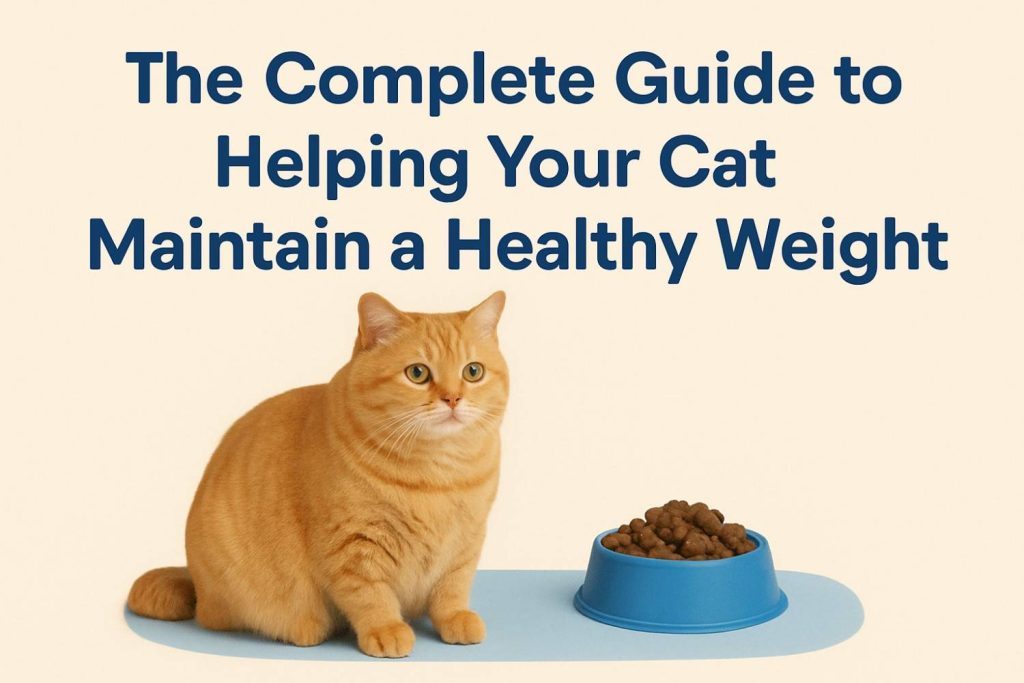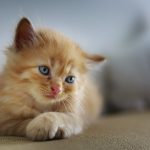If you’ve noticed your cat getting a little rounder lately, you’re not alone. Carrying excess weight is one of the most common health concerns among house cats today. While a fluffy, heavier cat may look cute, those extra pounds can shorten your pet’s life. In addition, they increase the risk of serious conditions such as diabetes, arthritis, liver disease, and heart problems.
The good news? With the right plan, patience, and consistency, you can help your cat lose weight safely and improve their quality of life. In this guide, we’ll explore everything you need to know about feline weight management — from spotting the signs of excess weight to designing a healthy diet and exercise routine that really works.

Why a Healthy Weight Matters for Cats
Maintaining a healthy weight is not just about appearance; it’s about overall health and longevity. Cats at a higher weight often face:
-
Increased risk of diabetes mellitus
-
Joint pain and arthritis
-
Breathing difficulties caused by fat around the chest
-
Liver problems such as hepatic lipidosis
-
Reduced energy, mobility, and playfulness
-
A shorter overall lifespan
By helping your cat shed excess pounds, you’re giving them a chance at a longer, healthier, and happier life.
How to Tell if Your Cat Has a Higher Body Weight
Not sure if your cat needs to slim down? Here are a few ways to check:
-
Rib Check – You should be able to feel your cat’s ribs easily under a thin layer of fat. If you can’t, they may be carrying extra weight.
-
Waistline Test – When viewed from above, your cat should have a visible waist behind the ribs.
-
Side Profile – From the side, there should be a slight upward tuck near the belly, not a hanging pouch.
-
Body Condition Score (BCS) – Vets use a 1–9 scale. A score of 5 is ideal, while 7+ indicates a cat in a higher weight range.
👉 Tip: Schedule a vet checkup before starting any weight management plan to rule out medical causes like hypothyroidism or Cushing’s disease.
Common Reasons Cats Gain Weight
Understanding why cats put on weight can help prevent it in the first place. The most common reasons include:
-
Free-feeding – Leaving food out all day often leads to overeating.
-
High-calorie diets – Dry kibble is calorie-dense compared to wet food.
-
Lack of exercise – Indoor cats may not get enough physical activity.
-
Treats and human food – Extra snacks quickly add up.
-
Neutering or spaying – Hormonal changes can slow metabolism, making weight gain easier.
Safe Weight Loss Tips for Cats
Unlike humans, cats cannot lose weight too quickly. Rapid weight loss can cause hepatic lipidosis, a dangerous liver condition. Therefore, a safe weight loss rate is around 1–2% of body weight per week. Here’s how to achieve it:
1. Switch to a Weight-Controlled Diet
-
Choose a vet-recommended weight-loss food that is high in protein and lower in calories.
-
Wet food often works better than kibble, as it has fewer calories per gram and provides extra hydration.
-
Avoid crash diets — never starve your cat.
2. Measure Portions Carefully
-
Use a digital scale or measuring cup for accuracy.
-
Divide meals into two or three small feedings instead of leaving food out.
-
Follow your vet’s calorie recommendations (usually around 20 calories per pound of ideal body weight).
3. Encourage Exercise and Play
-
Use toys like feather wands, laser pointers, or interactive motorized mice.
-
Provide climbing structures such as cat trees or wall shelves.
-
Aim for at least 15–20 minutes of active play daily.
-
Puzzle feeders and food-dispensing toys make mealtime more engaging.
4. Reduce Treats (or Replace Them)
-
Limit treats to no more than 10% of daily calories.
-
Replace calorie-dense snacks with healthier alternatives like freeze-dried chicken.
-
Reward with affection, grooming, or play instead of food.
5. Track Progress
-
Weigh your cat weekly and record the results.
-
Use charts or pet health apps to track progress.
-
Celebrate small milestones — even a 0.2 kg loss is meaningful.
Best Foods for Higher-Weight Cats
When choosing food for weight management, look for:
-
High protein (to preserve lean muscle)
-
Moderate fat (too much adds calories)
-
Low carbs (cats are obligate carnivores and don’t need grains)
-
Added fiber (helps your cat feel full)
Popular options include:
-
Prescription weight-loss diets from brands such as Royal Canin, Hill’s, or Purina Pro Plan
-
High-moisture wet foods with controlled calories
-
Grain-free options with lean protein sources
Creating a Healthy Lifestyle for Your Cat
Weight management isn’t just about food — it’s also about daily routine and environment. Here’s how to support your cat:
-
Interactive Environment – Add scratching posts, tunnels, and climbing trees.
-
Scheduled Playtime – Cats thrive on routine, so set play sessions at the same time each day.
-
Limit Stress – Multi-cat households can cause stress eating. Provide separate bowls and safe spaces.
-
Encourage Hydration – Cats sometimes mistake thirst for hunger. A water fountain can encourage drinking.
When to See a Vet
If your cat is severely weight or not losing weight despite changes, consult your veterinarian. They may recommend:
-
Prescription weight-loss diets
-
Bloodwork to rule out underlying conditions
-
Safe medications or supplements in rare cases
⚠️ Never try human weight-loss methods (like fasting, crash diets, or supplements) on cats. They can be dangerous.
Final Thoughts
Helping your cat reach and maintain a healthy weight is one of the most loving things you can do for them. With the right food, portion control, exercise, and regular monitoring, your cat can slim down and enjoy a longer, healthier life.
Remember, it’s not about quick fixes but about building sustainable habits. Small, consistent changes will lead to big results over time.



